Planning Gaviota
GavPAC Starts Vision Quest

It is probably safe to say that the flaring of frustrations when Gaviota’s future is under discussion is on the short list with death and taxes as one of the few certainties in life. With a warm spring evening serving as the backdrop, the relatively recently minted Gaviota Planning Advisory Committee (GavPAC) met this week in the auditorium at the Brandon School in Goleta—easternmost gateway to the world-class region, just a few miles away, that they are angling to serve. GavPAC is charged with the dubious task of crafting a set of recommendations for the County Supervisors, who are struggling toward a general plan for the roughly 31,000-acre Gaviota area.
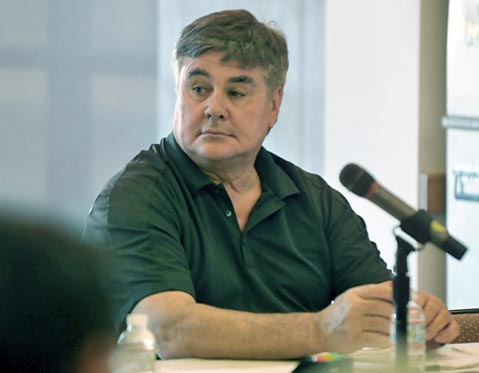
The 11-member board of stakeholder citizens got together in hopes of teasing out specific areas of commonalty and tension among the many individuals who care about the Gaviota. After more than three hours, despite a room full of good intentions and the efforts of County Long Range Planning staffers—the folks charged with facilitating the multi-year process—the meeting went the way of so many similar efforts in years past: potential progress log-jammed by divergent ideals and desires.
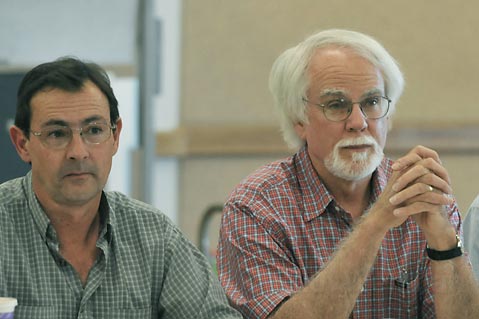
In fairness to the efforts, Wednesday night’s meeting was really the first time the group was looking to move beyond gathering input from the public, something they have been doing via several community workshops and van tours of the Gaviota neighborhood since they formally formed last November. The hope this week was to recap the public testimony and make sure nothing was missing from the six specific areas of intrigue on the Gaviota that were used to organize the workshops: Open Space, Transportation, Energy and Infrastructure, Public Recreation, Agriculture, and Boundary Planning. Then, with a little help from the crowd of 50-plus people in attendance, GavPAC was going to figure out the ways in which these various concerns and priorities for planning both dovetail and clash.
The first step alone—the simple recapping, which was scheduled for only 10 minutes, as per the agenda—lasted well over an hour as the various committee members postured and opined along traditional battle lines. “This will go on for hours if not several more meetings if we continue like this,” summed up GavPAC member Mark Lloyd, a private land-use consultant with extensive experience in the Gaviota.
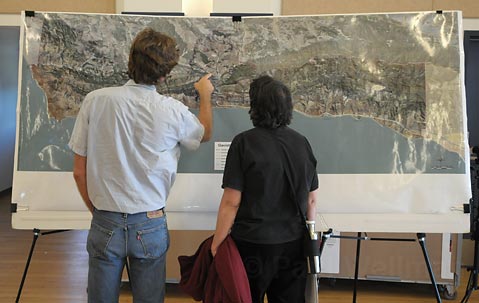
The constipation improved a little as the group moved on to identifying “common threads” betwixt the various opinions. Butcher paper was put on the wall and county staffer Vicki Parker, magic marker in hand, started taking notes as seeds of compromise started flying around the room. Vague but noble notions like maintaining the rural feel of Gaviota, protecting visual resources, insuring the survival of agriculture, having a long-term perspective in the process, expanding recreational opportunities, and staying flexible as the future unfolds made the list along alongside more specific ideas like protecting biodiversity, building a strong following for Gaviota-grown-or-raised food products, and easing the miles of red tape that prevent landowners from practicing “good stewardship.”
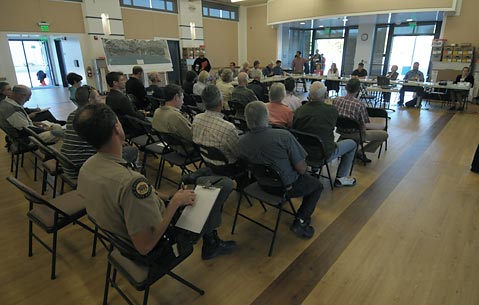
This portion of the meeting was an optimistic riff in an overall stagnated tune, and several boardmembers noted the temporarily upbeat attitude. “The reason we are here is because the system is broken,” summed up GavPAC member and landowner Guner Tautrim. “It doesn’t allow us to do what makes sense…But this [exercise] shows that it is all connected and that a holistic approach is possible and necessary.”
Then, with time running out on the hearing, the group moved on to identifying the “tensions” between the various visions for the Gaviota. Here, age-old divisions bubbled quickly and easily to the surface. Exchanges were civil and often even pleasant, but it became abundantly clear—as topics like water, money, private versus public interests, and the perilous viability of agriculture as we know it were put on the list—that the hopefulness evident in the earlier portion of the evening could still be quickly drowned out by the stakeholders’ differences.
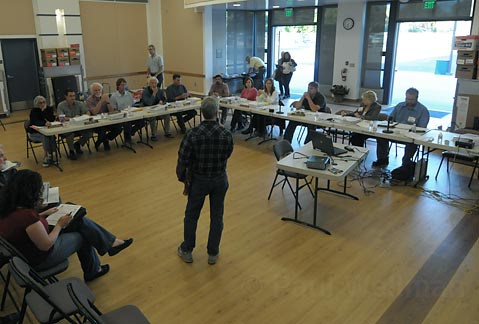
In fact, one of the last speakers of the night, GavPAC member Michael Feeney, did what he himself described as “pouring cold water on ideas.” Feeney, executive director of the Land Trust for Santa Barbara County, is a grizzled veteran of this process, having taken part in the two prior attempts at finding common ground in the name of Gaviota. He alluded to county government’s limitations, both fiscal and in its sphere of influence. He pointed to the fact that the rural nature of Gaviota (i.e. not many development projects) means very little opportunity to extract public benefits from landowners. And he noted the difficulty of convincing people that scenic views are not necessarily the most important feature of environmentally significant regions that they are trying to protect for the long haul. Feeney very quickly exposed just how much hard work the committee has ahead of them if they are to reach any meaningful conclusion within the next 18 months.
To that end, the next GavPAC meeting will be held April 21 at the Las Cruces school on the Gaviota Coast.



